A Tale Of Two Chariots
In the city of Lalitpur, a unique chariot festival unfolds every year. Two majestic chariots holding two archaic deities make their way through the old routes of the city. Windows flung open and hands join to offer regards to these deities.
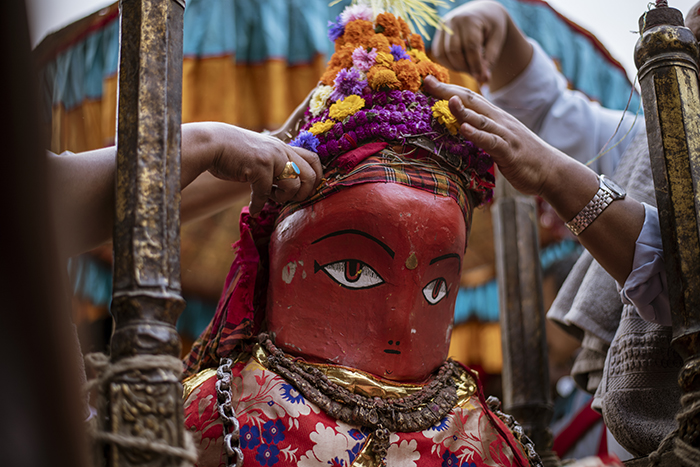
The chariot of Rato Matsyendranath is a landmark of the Kathmandu Valley. People who are interested in Newari culture have good knowledge about it whereas those who don’t are eager to know more. During the festive period, chariot catches a lot of attention, and why would it not? It is a five-storey tall, extremely beautiful and is a work of art.
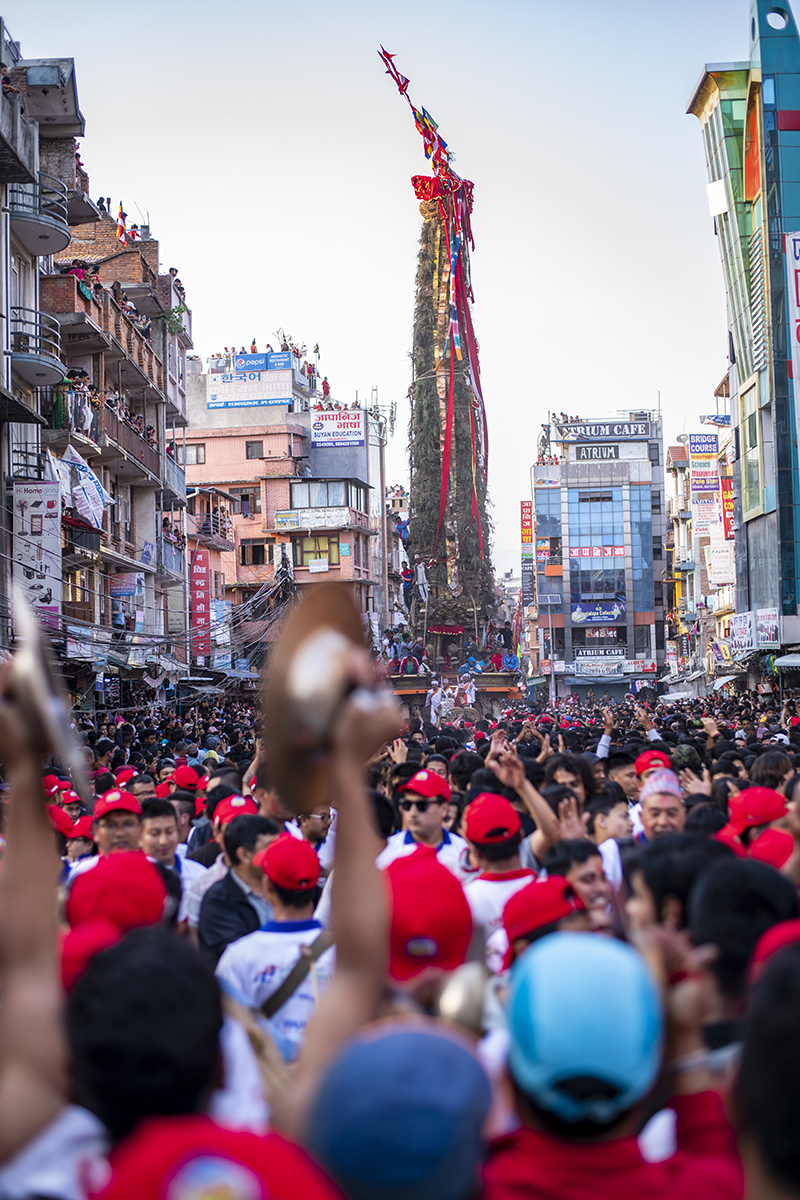
Dubbed as one of the longest chariot festivals of the world, the Bunga Dyo holds high significance in the Newar Pantheon. Also known as Rato Matsyendranath, the festivals origin dates back to the Lichhavi era.
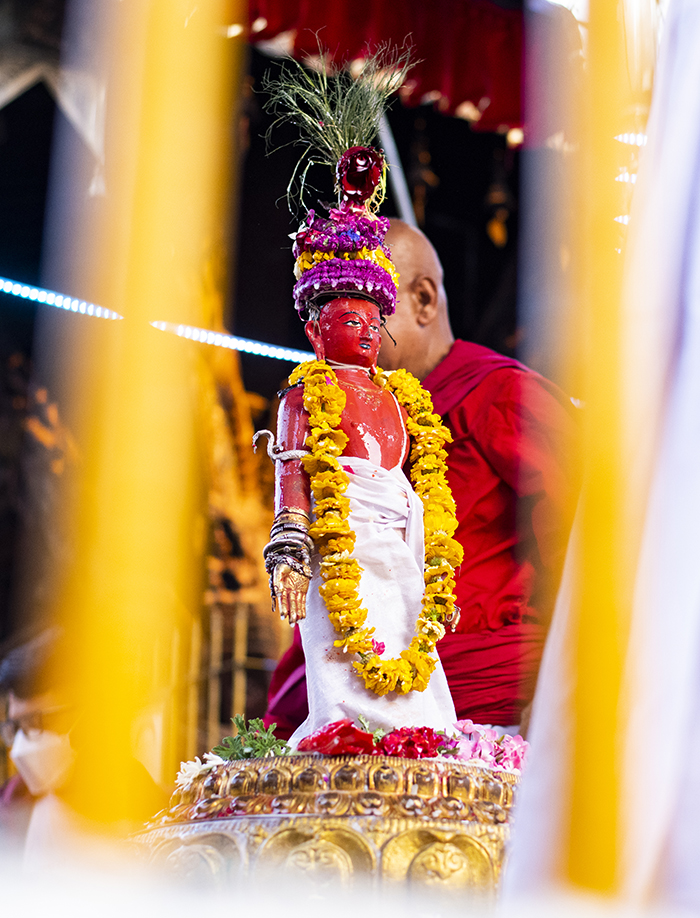
The chariot festival commences a day after Mata Tirtha Ausi ( Nepali Mothers Day) when the idol of Karunamaya is placed onto the chariot which is built at Pulchowk of Lalitpur. The elements of the chariot hold multiple significance in regards to the journey of bringing Karunamaya into the valley. The chariot is pulled by revellers on the fourth day after it is placed in the chariot. It makes its way through the ancient routes of Patan and ends in Jawalakhel after which the Bhoto (Vest) is displayed. After which the idol of Karunamaya is taken home to Amarpur (Bungamati) where it spends the next six months, after which a few weeks before Yomari Punhi the idol is brought to Patan and placed at Ta Bahal of Lalitpur.
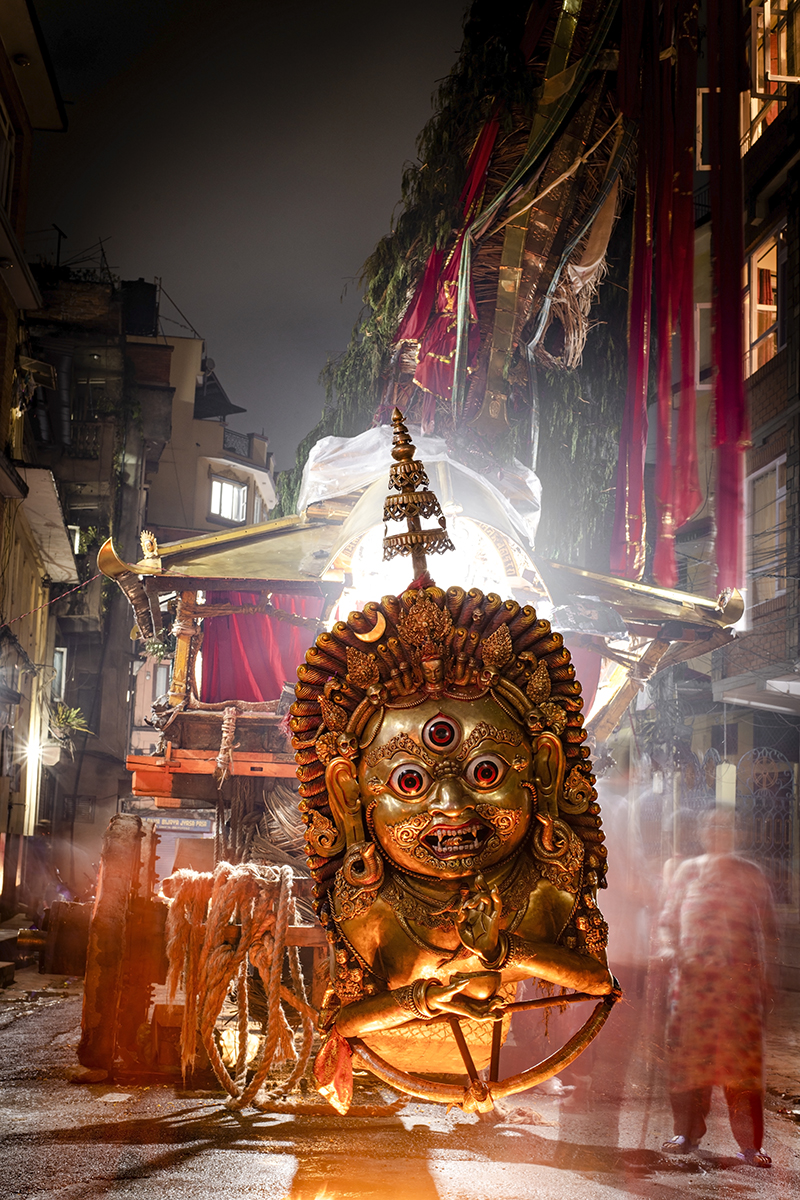
Locally known as Bunga Dyo (The God of Bungamati), the deity is also known as Karunamaya Lokeshwor who is regarded as the deity of compassion according to Buddhism. In local significance, the deity is the patron deity of Bungamati thus the name Bunga Dyo. The farmers of the Nepal Mandala ( The Valley Kingdom of Nepal) worship the Bunga Dyo as the god of rain.
However, not a lot is known about the smaller chariot, which leads and later follows the chariot of Matsyendranth. Seated in it is an idol commonly called Minnath, also called Chak: Baha Dyo in Nepal Bhasa. The temple is located inside a monastery known as Jestha Varna Mahabihar. It is known as Chak: Baha in Nepal Bhasa.
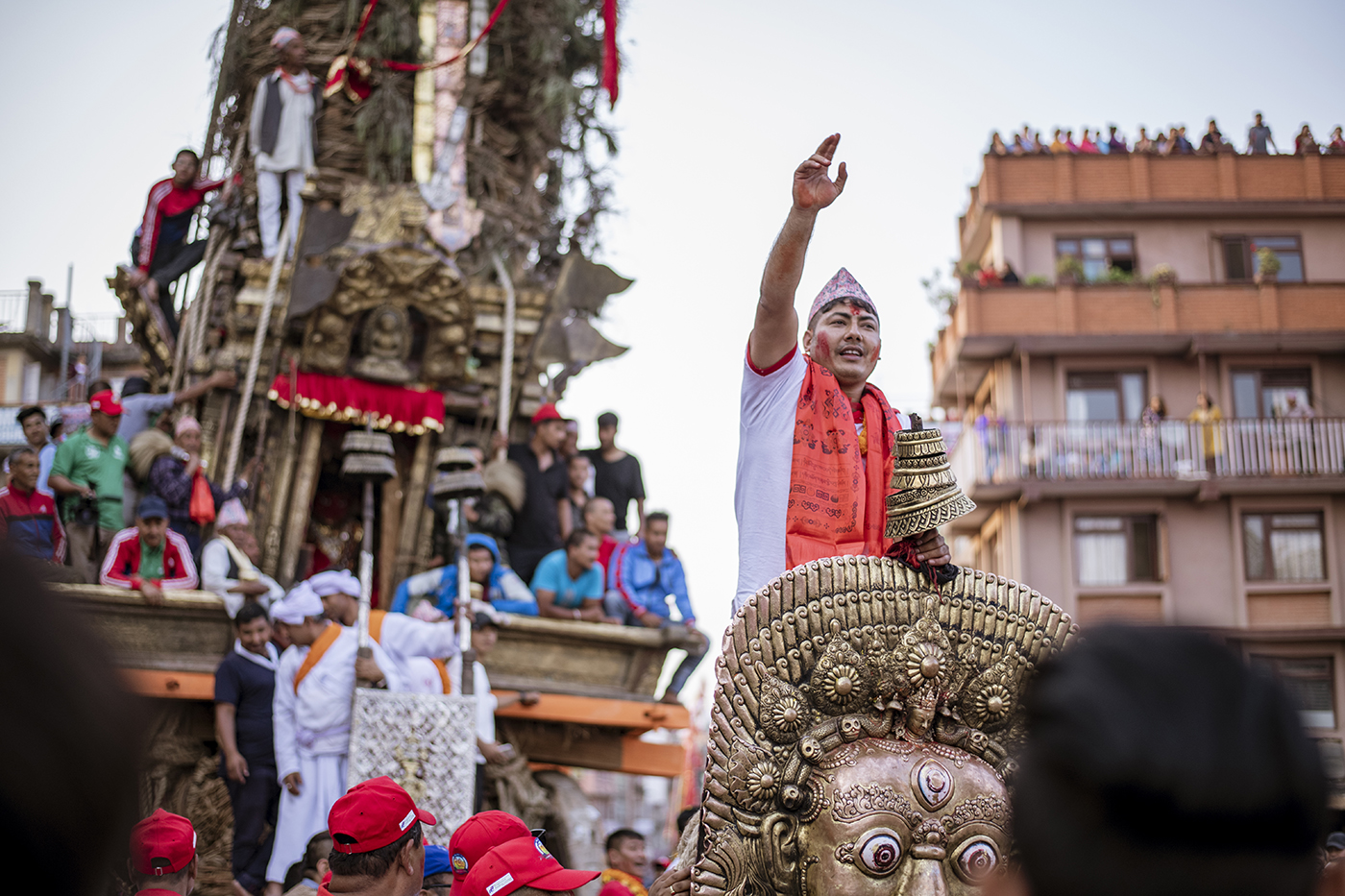
The establishment of this diety comes with a very riveting legend. Once there lived a great king at Lagankhel of Matiligrama named Brisha Deva. He used to always walk at a nearby Buddhist Stupa. He used to go around the stupa several times reciting prayers. One particular day, when he was doing this, he suddenly died. His dead body was lying in the same place while Yama Dutas brought his soul to Yamaloka (The land of the dead). His soul then was placed before Minnath, who was to decide if the death is right or wrong.
After a thorough inspection, Minnath concluded that it was too early to fetch the king Brisha Deva and asked Yama Dutas to take him back to earth. His lifeless body slowly started to move and he came back to life.
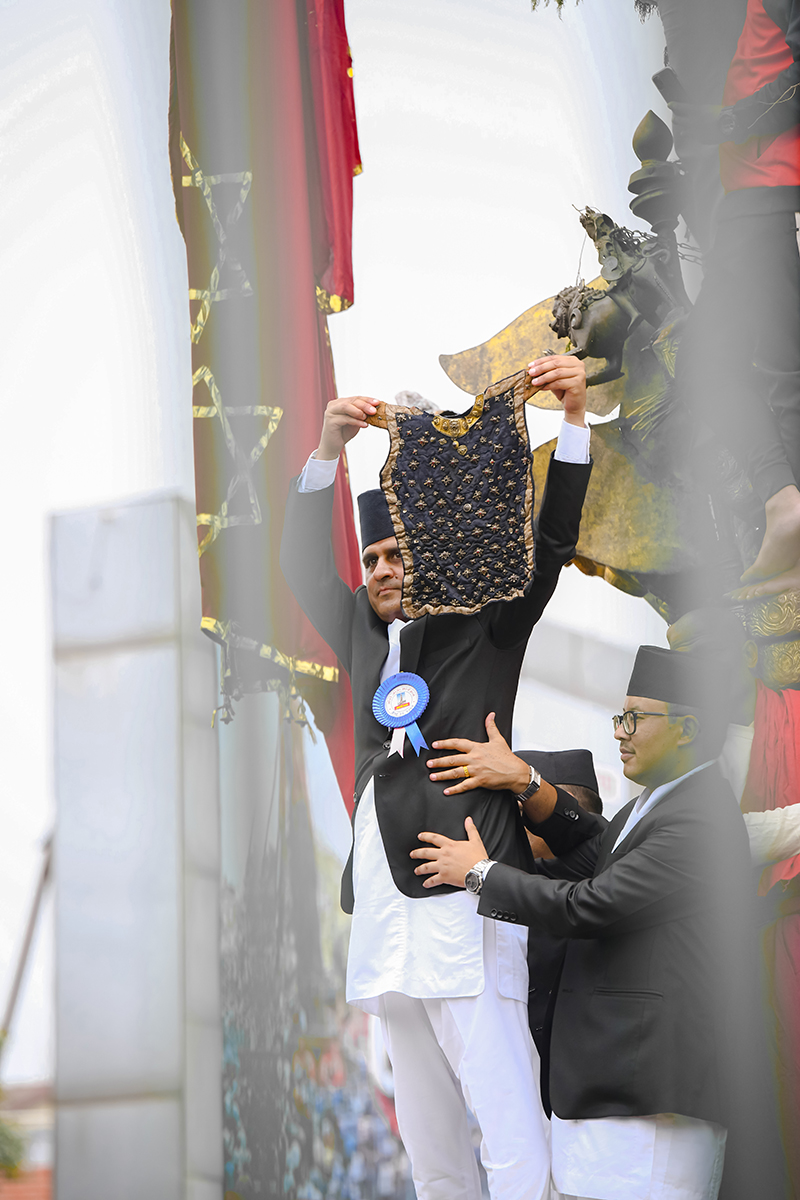
However, during the process, the king was enchanted by the land and impressed by the spiritual atmosphere and planned to recreate the same setting in his kingdom. He heard the soothing sounds of the Gandavyuha- Sutra and saw how Minnath treated the ones who suffered by squeezing water from his wet braided hair.
The king on his return requested his artisans to create an image of Minnath and introduced the practice of reciting Gandavyuha-sutra. Thus, started the worshipping of Minnath. Later when the King passes away, his brother Balarchan Deva started ruling the kingdom.
One night King Balarchan Deva had a dream in which Minnath told him, “O king when you shall awaken, you will see a bird flying towards a particular place. Build a beautiful home for me at the spot where the bird alights.”
When the king woke up and reached his astrologers, they stated that the dream was an auspicious one. The King built a monastery where he saw a bird perching on top of the tree. It was named Jesthaverna Maha Bihar which translates to the first-ever monastery. The image of Minnath was enshrined there and the tradition of the chariot festival was introduced.
In the reign of King Bara Deva, the valley was stricken by famine. Everyone was in dismay, and the king feared the worse. He consulted his chief astrologer Banudhatta on how to relieve it. The priest recommended travelling to Kamakhya ( present-day Orisha of Asam, India) to consult Karunamaya (Rato Matsyendranath). The priest requested King Bara Deva to talk to his father, King Narendra Deva who left the throne and worldly affairs to live in a monastery in Bhadgaeon (Bhaktapur). King Narendra Deva agreed to visit Kamakhya to help his people. A trio of King Narendra Deva, Priest Banudhhata and Ratnanakar Jyapu embarked on the journey. At Kamakhya they met with a master farmer. The trio told him of the ill that plagued their kingdom. Karunamaya wished to visit the valley and relieve it himself but wasn't allowed to by his mother. Thus, he passed on to them the needed tools, seeds and knowledge to compact the famine. The trio then bid farewell to the master and returned to the valley. They then applied the findings as instructed, and the fields slowly but steadily began to sway like gold.
It was this feat, the generosity of one man. Who, without any expectations, helped three ailing strangers that earned him a high rank in the pantheon of this valley. Even though he was mortal, the people in this valley immortalised him. A temple was built in his honour in the village of Bungamati. The settlement was renamed Amarpur, meaning a land immortal.
An elaborate chariot festival was designed by priest Bandudhatta. A 5 storey tall chariot was envisioned with featured all the elements of the journey and the temple of Bungamati. But, the kingdom of Lalitpur had seven chariot festivals.
It is said that six of the seven gods agreed to discontinue their chariot festival honouring Karunamaya, but Minnath wished different. When the priest Bandhudatta tried to bring Minnath to his control, he failed. After this Minnath opened his third eye and projected a beam of light which hit a stupa outside the Baha gate. Another saying states that he threw a Bajra. The stupa stands at the same place to date and seems like it has been hit by a strong force.
Thus the chariot festival of Minnath was not merged with that of Karunamaya and It continued to develop its own identity. A schematic for a combined procession was created featuring two chariots, one of Karunamaya and the other of Minnath. In honour of the other six gods and their chariot festival, they were incorporated into the chariot of Karunamaya, accordingly.
For almost two millennia and more, the chariot of Karunaya has made its way through riveting terrain and waited at Jhana Ko for Minnath. It has become not just a festival but the identity of the valley.
It has grown as a symbol of religious and cultural unity, with worshippers of multiple religious sects bestowing prayer and worship to the God of Compassion (Karunamaya) and God of Mercy (Minnath).


